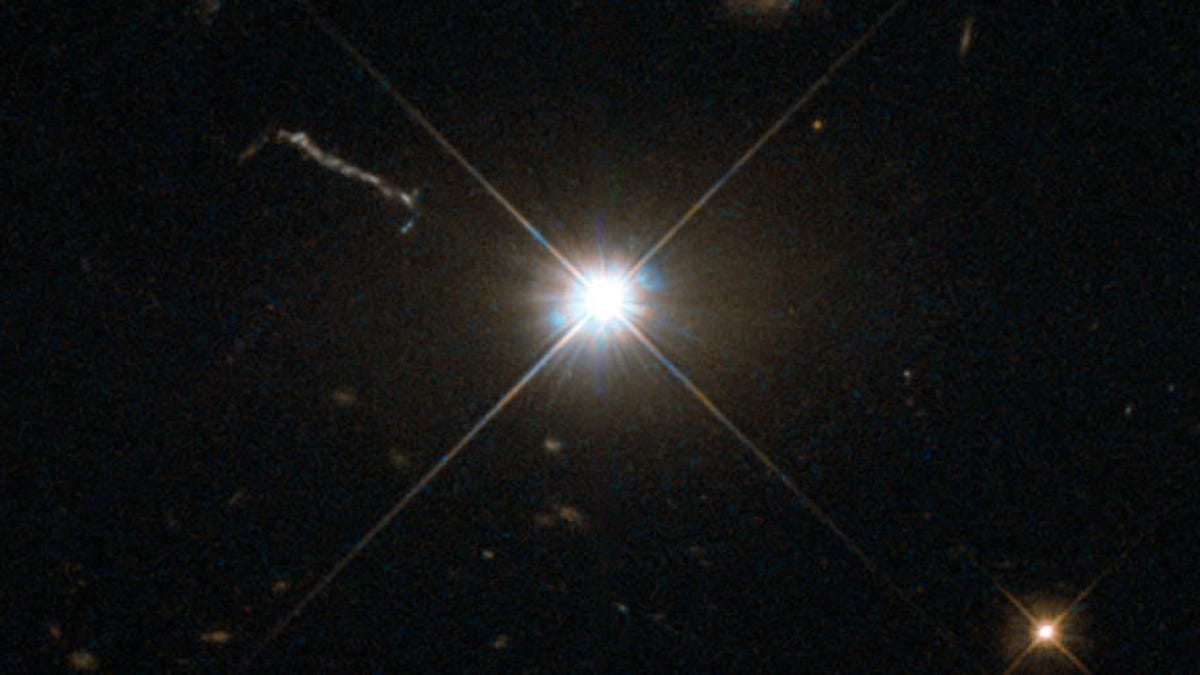Fastest growing black hole ever seen can swallow a sun every few days
And you thought you were hungry.

A Hubble image of a supermassive black hole, or quasar.
We often think of a black hole as the darkest object in the universe, consuming even the light that comes near it. But astronomers have spotted the fastest growing back hole ever seen and its voracious appetite actually makes it shine almost inconceivably bright.
"This black hole is growing so rapidly that it's shining thousands of times more brightly than an entire galaxy, due to all of the gases it sucks in daily that cause lots of friction and heat," said Christian Wolf, from the Australian National University Research School of Astronomy and Astrophysics, in a news release Tuesday.
"If we had this monster sitting at the centre of our Milky Way galaxy, it would appear 10 times brighter than a full moon," Wolf said. "It would appear as an incredibly bright pin-point star that would almost wash out all of the stars in the sky."
To put the mind-blowing scale of the black hole into further perspective, it's estimated to be the size of 20 billion suns and capable of sucking up mass equal to our sun every couple of days. At that rate, it would grow by 1 percent every million years.
Such supermassive black holes, also called quasars, can actually emit energy. In the case of this newly discovered "ultra-luminous" void, which has the incredibly unwieldy name SMSS J215728.21-360215.1, it's throwing off ultraviolet light and X-ray radiation.
"If this monster was at the center of the Milky Way it would likely make life on Earth impossible with the huge amounts of X-rays emanating from it," Wolf said.
Keep in mind that the center of the Milky Way is about 26,000 light-years away from Earth. So if Wolf is right, this insane black hole is sending out an almost incomprehensible amount of sterilizing radiation that essentially renders an entire corner of the cosmos inhospitable to life as we know it.
Fortunately, Wolf points out that such huge and rapidly growing black holes seem to be very rare. And this one is 12 billion light-years away and hails from the early days of the universe.
A paper by Wolf and his team on the discovery will be published in Publications of the Astronomical Society of Australia.
"We don't know how this one grew so large, so quickly in the early days of the universe," Wolf says. "The hunt is on to find even faster-growing black holes."
Sounds like a worthwhile hunt, just as long as we don't get too close to the target.
Crowd Control: A crowdsourced science fiction novel written by CNET readers.
Solving for XX: The tech industry seeks to overcome outdated ideas about "women in tech."

